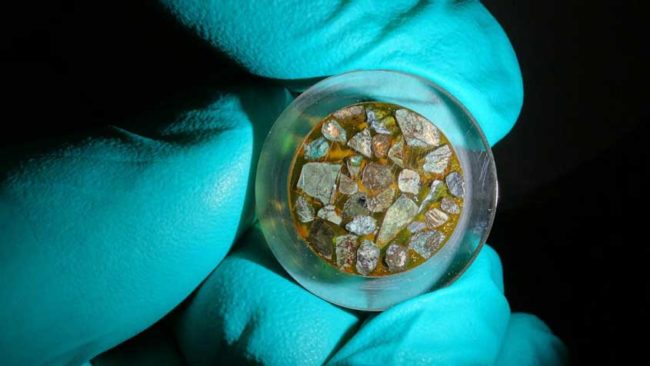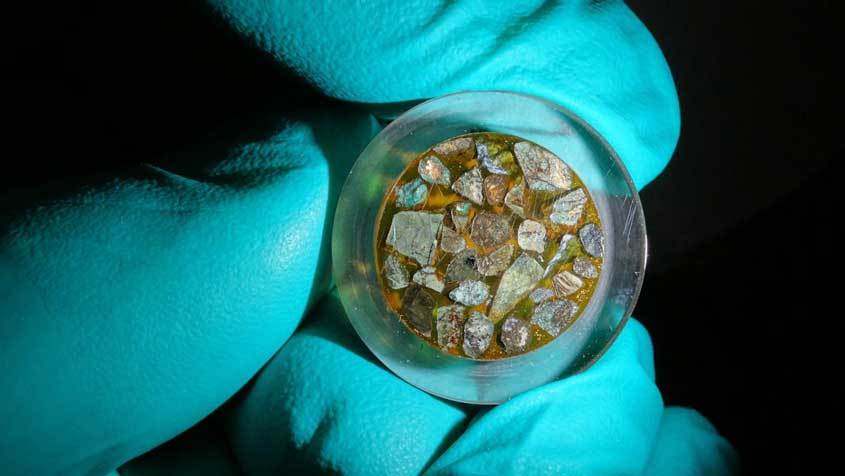It is perhaps popular within a religious context to observe how wonderful God is for having “designed” a world that is just perfect and ideal for us. In essence the Goldilocks arguments … not too hot and not too cold, but just right. All praise to Thor then, or Xenu or … oh just pick your favourite God, you have lots to choose from. The truth however is actually quite fascinating. As we explore and gain a deeper understanding, we observe how life via natural selection adapts itself to perfectly fit its environment.
I have three recent bits of science news bout new discoveries that illustrate this rather well. In isolation each is a fascinating bit of new information, but together they weave a story of just how adaptable life actually is.
Item 1 – Tibetan people have multiple adaptations for life at high altitude
A new paper published within PLOS Genetics on thursday is entitled “Evolutionary history of Tibetans inferred from whole-genome sequencing“.
Humans living on the Tibetan Plateau have unique genetic adaptations that enable them to thrive at this high altitude. Studying them has been of great interest and so recent studies have already revealed that the Tibetan EPAS1 haplotype gene is involved in high altitude-adaptation and originated in an archaic Denisovan-related population. For this specific study they sequenced the whole-genomes of 27 Tibetans and then used the data gathered to conduct an analyses. So what did they find?
- They clearly identified two genes, EPAS1 and EGLN1, that were already known to be involved in adaption to high elevations.
- They also identified two other genes, PTGIS and KCTD12, and these are related to adaption to low oxygen levels.
- A variant of VDR popped up, and that is interesting because it plays a role in vitamin D metabolism. This one may help compensate for vitamin D deficiency
The EPAS1 genetic variant appears to come via their ancestry with the ancient Denisovan people.
What they also learned via the analysis is that the Han Chinese and Tibetan subpopulations split as early as 44 to 58 thousand years ago, but that there was genetic interaction happening until roughly 9 thousand years ago.
“The comprehensive analysis of whole-genome sequence data from Tibetans provides valuable insights into the genetic factors underlying this population’s unique history and adaptive physiology at high altitude. This study provides further context for analyses of other permanent high-altitude populations, who exhibit characteristics distinct from Tibetans despite similar chronic stresses, as well as lowland populations, in whom hypoxia-related challenges, such those inherent to cardiopulmonary disease or sleep apnea, elicit a wide-range of unique physiological responses. Future research efforts will focus on identifying the interplay between various adaptive versus non-adaptive genetic pathways and environmental factors (e.g., hypoxia, diet, cold, UV) in these informative populations to reveal the biological underpinnings of individualized physiological responses.”
– Tatum Simonson, one of the co-authors. Assistant Adjunct Professor of University of California, San Diego
This is yet another example of how our own species can and does adapt to fit into its environment.
Item 2 – Lack of oxygen not a showstopper for life
A paper published within Oxford University’s FEMS Microbiology Ecology is entitled “Ecological differentiation in planktonic and sediment-associated chemotrophic microbial populations in Yellowstone hot springs“.
Life in environments with temperatures that exceed the upper limit of photosynthesis (∼73°C) is supported by chemical energy. The primary example is of course the thermal vents deep within the ocean far from any light, but it also turns out that the yellowstone hot spring is ideal for such microorganisms to thrive in.
After sampling, what they have found is as follows:
- planktonic microorganisms, the ones that swim about, do use oxygen to survive, but the levels they need are a lot lower than the degree of oxygen in our atmosphere today.
- In contrast, those living in sediment were truly different. Those were mainly chemosynthetic microbes then fed upon sulfur or oxidized iron.
In other words, with no dissolved O2 to feed upon, the microbes in the sediment adapted a chemosynthetic solution for survival. It might sound potentially dull, but this is fascinating …
“”These environments are understudied in astrobiology research, but hold tremendous promise as accessible analogs for extraterrestrial habitable environments that might be present on Enceladus, Mars, or Europa,”
– Daniel Colman, the lead author of the paper, geomicrobiologist at Montana State University in Bozeman.
Mr Colman would also love to drill down and get samples from the subsurface high-tempature biosphere in Yellowstone, but that is not going to happen. For rather obvious reasons the park service tends to raise an objection to any proposal to drill for any reason.
Item 3 – Life six miles below the seafloor

PHOTOGRAPH COURTESY OLIVER PLÜMPER, UTRECHT UNIVERSITY
National geographic writes about a new study that reveals a potential for life to exist below the seafloor as far as six miles down …
On Earth circa four billion years ago, life was hard. Frequent asteroid strikes turned parts of the planet into molten rock. Food and livable spaces were few and far between. What was a microbe to do to survive?
Some very early life could have made it by staying deep—living as far as six miles below the seafloor.
That’s the implication from a new study that found signs of microbes alive today below the deepest place on Earth, the vast underwater canyon called the Mariana Trench.
… researchers sampled mineral-rich mud from the South Chamorro seamount, a mud volcano near the Mariana Trench fueled by the subduction zone below it. Though the team did not find intact microbes, they did discover tantalizing traces of organic material, which may add to evidence that life can survive in the most extreme of environments.
“This is another hint at a great, deep biosphere on our planet,” says study leader Oliver Plümper, a researcher at the Netherlands’ Utrecht University. “It could be huge or very small, but there is definitely something going on that we don’t understand yet.”
This is truly fascinating because the conditions under the seafloor are very similar to the conditions observed on Europa and Saturn’s moon Enceladus. It widens the scope for life to also be out there.
Incidentally, the study paper on all of this can be found on PNAS and is entitled “Subduction zone forearc serpentinites as incubators for deep microbial life“.
One Further thought
As I mentioned in the opening, some think the world, or for that matter, the entire universe has been especially designed to accommodate us. This however is not the way things are. When life finds a niche it adapts through natural selection to thrive within that niche. The environment was not designed for us, rather we evolved and adapted to fit the environment.
The idea that it was all designed reminds me of part of a speech given by Douglas Adams back in 1998 that parodies this …
Imagine a puddle waking up one morning and thinking, “This is an interesting world I find myself in — an interesting hole I find myself in — fits me rather neatly, doesn’t it? In fact it fits me staggeringly well, may have been made to have me in it!” This is such a powerful idea that as the sun rises in the sky and the air heats up and as, gradually, the puddle gets smaller and smaller, it’s still frantically hanging on to the notion that everything’s going to be alright, because this world was meant to have him in it, was built to have him in it; so the moment he disappears catches him rather by surprise. I think this may be something we need to be on the watch out for. We all know that at some point in the future the Universe will come to an end and at some other point, considerably in advance from that but still not immediately pressing, the sun will explode. We feel there’s plenty of time to worry about that, but on the other hand that’s a very dangerous thing to say.
Side Note: Click this link and read his entire speech, you might enjoy it.
